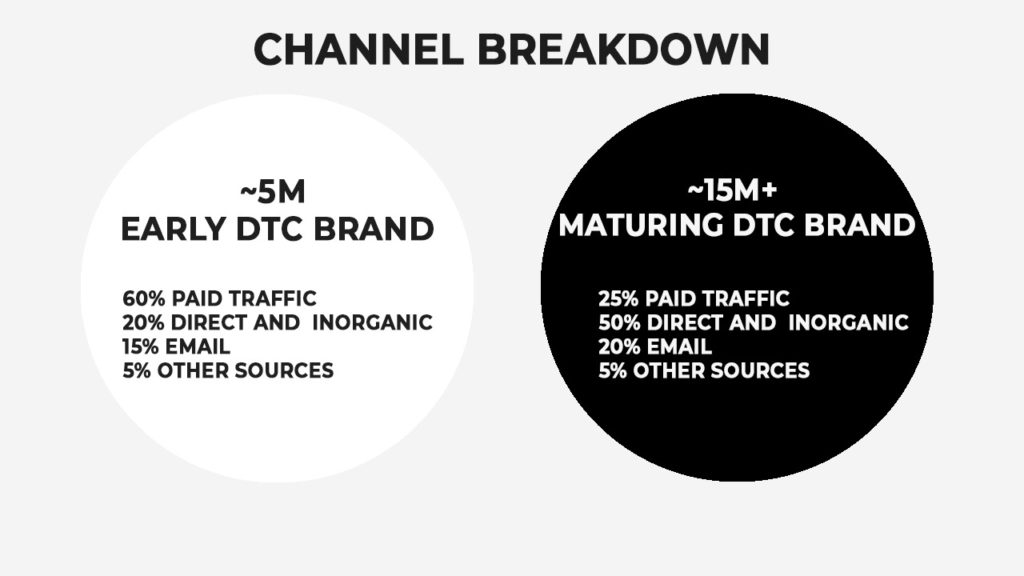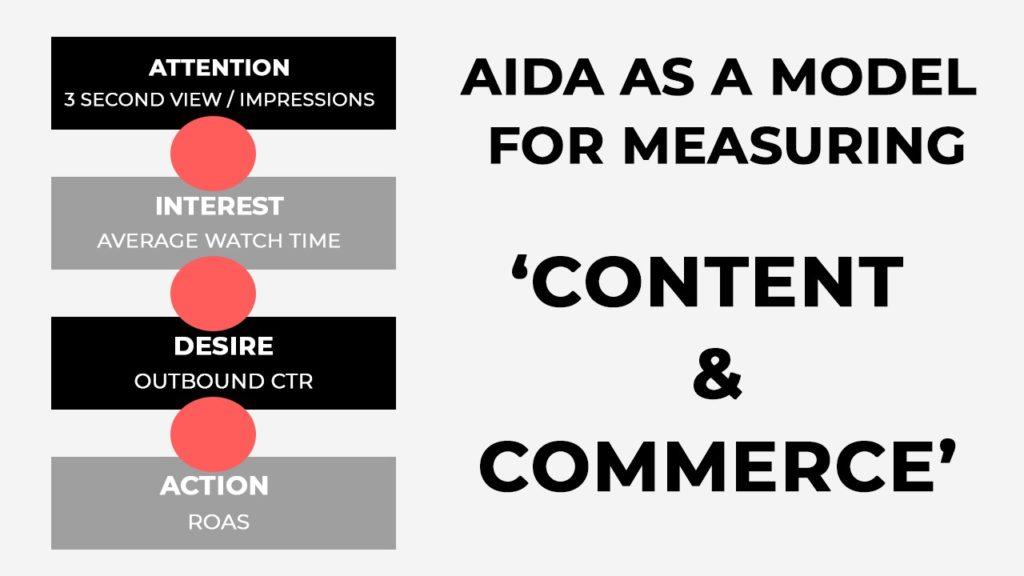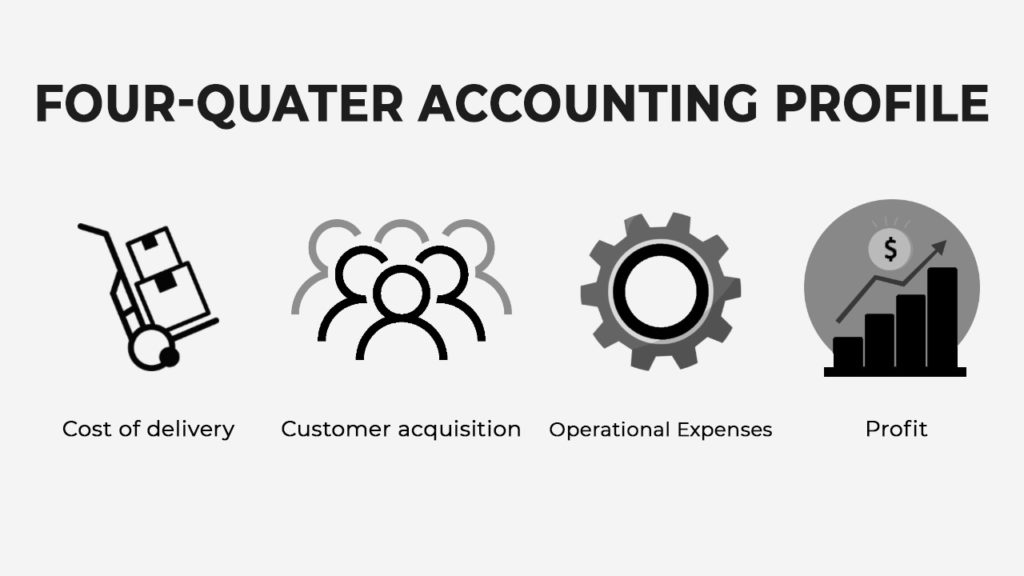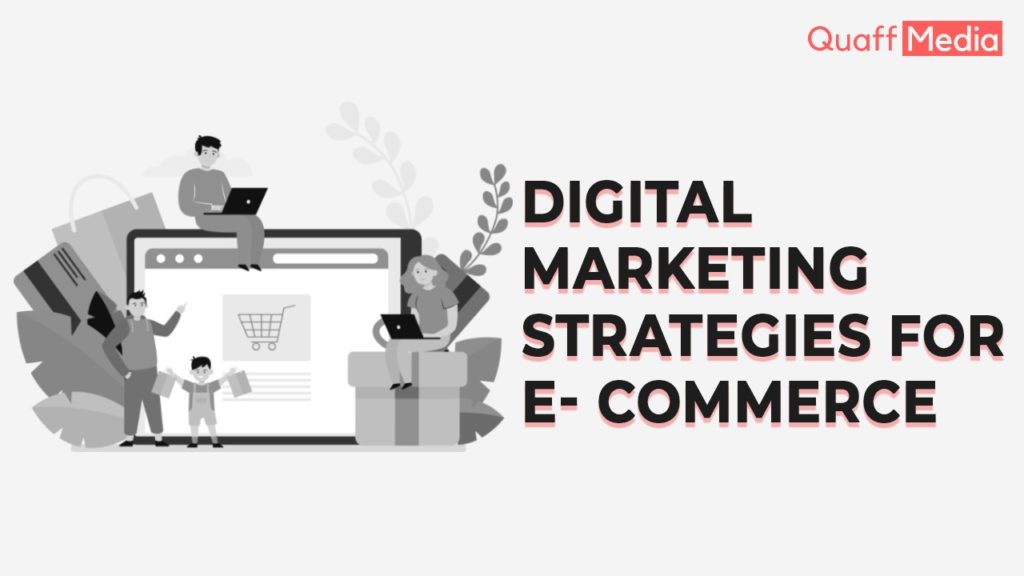Prioritize a healthy mix of paid and organic traffic
Create distinct funnels based on SKUs or Buyer Personas
Follow the AIDA Metrics to Boost Your Creativity
Always optimise for the conversion goal (Always? Yes, at all times)
Using Search Engine Marketing to Capture Demand
Gain a competitive advantage through content marketing and SEO
Set Source-Specific Conversion Goals & Benchmarks
Hone your offer, your entire offer, and almost nothing else
Increase LTV by using email marketing, SMS, and first-time-purchase offers
Prioritize a healthy mix of paid and organic traffic
Begin by comparing your overall channel attribution to two stages of DTC development (through Google Analytics):

In the history of commerce, Facebook remains the single most potent demand generation platform.
Following that, we employ search engine marketing (SEM) to ensure that the customer “owns their real estate”: the first page of results for branded queries. Ads from Google and Facebook should not be pitted against each other; instead, they should be united.
We turn our attention to diversification on other platforms like Snapchat, Pinterest, and TikTok only after demand generation via social and demand capture via search — particularly, Google Shopping and Google Ads — are in place.
Create distinct funnels based on SKUs or Buyer Personas
You have no pixel data when you first join Facebook. You must use narrow targeting to “aim” or “season” your pixel. Once your pixel data begins to aggregate, you can employ broad audiences.
Unfortunately, you’ll reach a saturation point sooner or later. Facebook can only find a limited number of new consumers who are similar to your previous clients. When this happens, efficiency suffers.
When you reach a plateau, you must reintroduce specificity to reach new audiences and scale. To do so, you’ll need to re-target the pixel with new creative ideas and funnels to attract new clients while maintaining a large audience.
In other words, scale is determined by precision rather than width. Replace half-hearted segmentation attempts with funnels dedicated to each product or audience. The style of creativity and messaging that appeals to a 20-year-old guy differs significantly from that which appeals to a 50-year-old lady.
Follow the AIDA Metrics to Boost Your Creativity
In a Facebook ad campaign, there are a lot of elements to consider. The AIDA framework can help you make sense of them and improve ad performance systematically:
- Attention
- Interest
- Desire
- Action
All too frequently, e-commerce companies conduct campaigns in which 90% of their ad budget is spent on scrolling — users who don’t even pause to watch the ad for a few seconds. The three-second video watch is always prioritized over impressions.
Set a minimum target of 25%-30% of your audience stopping to watch the ad. If not, go back and look at the opening three seconds of your advertising. Indeed, we have target KPIs for each stage of the AIDA architecture, which you can see in the table below:

You must follow the steps in the correct order to achieve your goals.
Make sure you’re attracting the attention of the audience first. When you have attention, make sure you keep the audience’s attention. Evaluate Desire if both Attention and Interest are met. Then there’s action.
Always optimize for the conversion goal (Always? Yes, at all times)
This is a straightforward point, but one that is significant enough to have its heading. CTC constantly bids for the conversion goal. Bidding for top-of-funnel metrics like “Brand Awareness” or middle-of-funnel actions like “Add to Shopping Cart” or “Initiate Checkout” to season the pixel is tempting.
Don’t.
By doing so, you’re instructing Facebook to look for customers who will Add to Shopping Cart or Start Checkout but will not complete the transaction.
You don’t want people like that clogging up your sales funnel, and you certainly don’t want window shoppers who start buying… However, purchases are rarely completed.
Using Search Engine Marketing to Capture Demand
Demand generation is dominated by Facebook. Demand-capture is owned by Google Ads and Shopping. When they see an advertisement, many individuals immediately go to Google and look up the brand.
At the very least, you should “possess your real estate.” To put it another way, you want to keep control of what consumers see and find when they search for your brand.
The more competitive your market is, the more critical this is.
The initial stage in your order of operations should be to maximize brand search. But search engine marketing doesn’t stop there: product listing advertisements (PLAs), often known as Google Shopping Ads or Smart Shopping Campaigns, account for two-thirds of all PPC clicks on Google.
Unfortunately, most advertising budgets drastically underinvest in this high-intent ad space. Worse, data is left in its original state, data is left in its original state, rather than optimizing product feeds to display purchase triggers such as reviews, custom pictures, discounts, and shipping.
Still, the actual secret to expanding search engine marketing is to go beyond the box.
It’s a full-funnel strategy that incorporates your greatest content into digital platforms like YouTube and displays advertising. Customizing content for placement and performance puts your brand in front of customers everywhere they go.
Gain a competitive advantage through content marketing and SEO
If an online business survives three years, we can almost ensure that they’ve either had success with Facebook marketing or had a viral moment that boosted sales.
If an e-commerce business lasts ten years, it’s quite likely that they’ve mastered content marketing or organic traffic.
Relevant search traffic will enable certain firms to scale to tens of thousands, if not hundreds of thousands, of qualified shoppers per month via search engine optimization (SEO).
To do so, you’ll need a combination of three things.
One, optimize your collection and product pages for keywords with high purchase intent. Two, optimizing those same pages for technical factors, such as proper H tags, alt image tags, and page load speed. Three, creating supplementary material for keywords with non-buying intent.
Not every product is accompanied by a high level of search intent. Various examples of successful content marketing for other niches include:
- User-generated content (UGC)
- Contests and challenges
- Organic social media presence
- Influence marketing and collaborations
- Micro-influencer content production
- YouTube and other video platforms
Organic content costs less per marginal visitor than bought content, with the upfront investment covered by lower CAC, more loyalty, and a much longer ROI window.
None of this, on the other hand, is why content is so important. A solid content strategy provides your company with a pool of assets to use for the other types of marketing mentioned in this template.
Content has become a moat across the board, from advertisements to email, acquisition to retention. One that will continue to widen in the coming years, separating winners and losers.
Set Source-Specific Conversion Goals & Benchmarks
Two evaluations stick out while using Google Analytics.
The first step is to create a basic table or spreadsheet that breaks down your conversion rate per channel. Second, a scatter plot of conversion rate versus average order value (AOV). While conversion rate optimization (CRO) for e-commerce is similar to that of any other business, we take a unique approach.
When most people think of conversion rate optimization, they’re thinking of sidewise conversions. At CTC, we obsess over social media marketing strategies to the point of obsession.
When you master paid traffic, you can apply what you’ve learned to easier-to-convert traffic sources like organic, direct, referral, and email. Because you have complete control over all the levers, you can test sponsored traffic faster and more accurately than other sources.
We use AIDA to measure funnel success from ad to site, as we mentioned previously, but that’s only the beginning. In its most basic form, an ad’s goal is to entice someone to leave Facebook and visit the website. The website’s responsibility after that is to convert.
We use Message Mapping to increase conversion rates. Message Mapping guarantees that a customer seeing your ads sees the same message as they progress through the funnel, including copy, creativity, aesthetics, and offer.
From the ad through the purchase, we want everything to be consistent. Is there a smooth transition from one experience to the next?
- An ad to the landing page
- Landing page to the cart
- Cart to the checkout process
- Confirmation page to post-purchase emails
- And right through to the product’s unboxing experience
Nothing produces a worse user experience than clicking on a product ad and being redirected to a generic homepage or product collection, where the user must then search for the product they clicked the ad to purchase.
While this may appear to be plain sense, many ecommerce businesses have abandoned this time-consuming practice in their rush to grow. It might have worked five years ago, but with ad costs skyrocketing, this approach of scaling is no longer viable.
When we take a step back and look at the big picture, we frequently discover that conversion improvements fit into one of these categories:
- Improving consistency
- Improving copywriting
- Improving layout
- Improving timing
- Improving cross-selling
For a reason, consistency reigns supreme. Your advertising most certainly contains segmentation aspects.
Without consistency throughout the funnel, performance can suffer even more than if there were no segmentation at all. Conversion issues are frequently resolved when the message is focused and consistent from beginning to end.
Hone your offer, your entire offer, and almost nothing else
The term “offer” does not imply “discount.” Instead, your offer is made up of two components: product and pricing. We could add a third “P” — how you position product and pricing (i.e., your creativity) — but that merely adds to the confusion until the first two are nailed.
It’s impossible to overstate the importance of what you have to give (product) and how much it costs to buy it (price). This is the big show… That should be the focus of the majority of onsite conversion efforts.
Naturally, your funnels are affected by a slew of factors. Many of them have already been discussed. They’re nothing special in terms of performance when compared to what’s on sale.
Increase LTV by using email marketing, SMS, and first-time-purchase offers
No other digital marketing strategy has yet to outperform email in terms of online sales. Affordable, effective, and personalized (with the appropriate ingredients).
SMS is a new kid on the block in the digital world, and it’s giving email marketing a run for their money. SMS allows you to reach customers where they already spend their time: on their phones.
When you combine email and SMS, you get more than the sum of their parts. For visual storytelling and merchandising, use SMS for timely, action-oriented messaging and email for visual storytelling and merchandising.
It’s like setting your money on fire if you don’t launch and optimize capture methods for these two channels. You might get that first conversion, but if you can’t lure clients back again and again, your repeat buys percentage will suffer.
Pop-ups are viewed as an intrusive interruption to the purchasing experience by critics. They can serve as a friendly request to stay in touch with a brand they’ve already indicated an interest in when done correctly.
The most effective pop-ups should:
- Welcome the guest and invite them to become a member of your community.
- Provide a little incentive for them to provide their knowledge.
- Inform them of the advantages of subscribing to your service.
High sign-up rates can be achieved by keeping the messaging customer-centric. Providing a monetary incentive in exchange for their personal information greases the wheels for conversion inside the same session.
But it’s after you’ve signed up that the true magic happens. If you can’t obtain that initial sale right away, a successful welcome series nurtures prospects until they buy.
Sure, the flow should repeat the pop-motivation, up’s but this series should also educate prospective subscribers about the “why” behind your business and provide more information about your product line.
Merchandise these emails with your best-selling items as well as the items that are most likely to encourage repeat sales. Getting the initial sale isn’t the end aim; rather, it’s the beginning of a deeper relationship with your buyer.
Customers have a plethora of distractions in the online and offline world, so creating a more memorable online shopping experience — and generating a second-order — can be accomplished through a compelling post-purchase series, as much as we’d like to believe our products alone should be a driver of retention.
Post-purchase emails are arguably the most under-utilized arrow in a marketer’s quiver, with users opening and reopening confirmation emails to check the status of their order or the progress of their eagerly anticipated shipment.
Make the most of your post-purchase series by:
- Thank the consumer for their business and build anticipation for the delivery.
- Share important information on how to utilize or care for their goods to add value.
- Prevent frequent customer service questions by addressing them ahead of time.
- Reduce worry by keeping them informed about the status of their shipment and expected delivery dates.
- To encourage repeat purchases, make a timely bounce-back offer.
After a product has been delivered, ask your customers for feedback on the product and the purchasing experience.
Positive testimonial videos or positive reviews can be significant pieces of social proof that you can use in prospecting campaigns or to add conversion-driving material to your website or emails.
Negative reviews can be addressed through high-touch outreach from your customer care staff, giving you the chance to put things right, reclaim trust, and establish the brand affinity required to maintain a long-term customer connection.
Divide Variable Costs into Four Categories to Optimize Them
What methods do you use to track and optimize variable costs?
There are numerous options, but we strongly advise using a four-quarter accounting grid. Each reflects a percentage of your revenue and indicates the health of that component as well as potential growth areas:
- Cost of Delivery or COGS
- Customer Acquisition Costs (CAC)
- Operating Costs (OPEX)
- Profit

Ideally, each of these areas should receive 25% of the total revenue. That’s a high-profit bar, but it’s more useful as a signal statistic for our other categories. Is CAC 25% or less? We’re on the right track there.
Is the cost of variables greater than 40%? That appears to be an area where you can improve. While OPEX is largely out of our reach as growth marketers, we do have a lot of control over CAC, and Variable Costs is another area where we can make a difference.
What can you do to make them better?
We may strive to keep package costs as low as possible while still giving an excellent unboxing experience. We may look at how more expensive packaging affects LTV (CM) and make adjustments to get the best results.
We might pressure our team or clients to renegotiate platform fees, payment processing fees, shipping charges, and other expenses. Alternatively, we can press our team or clients to renegotiate pricing for ingredients or resources.
Of course, if you want to make your ambitions a reality, you’ll need solid plans with clear objectives. That has been the focus of this guide.

